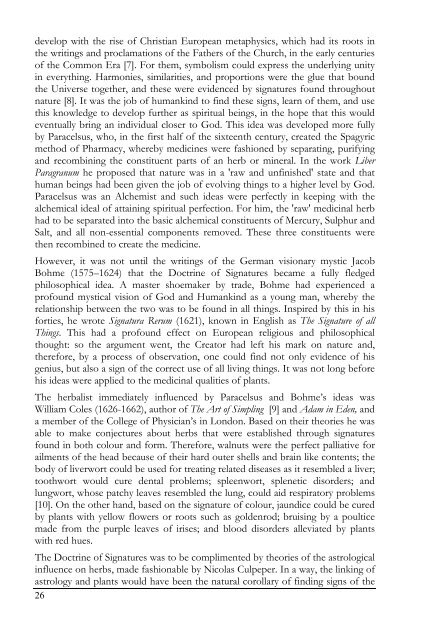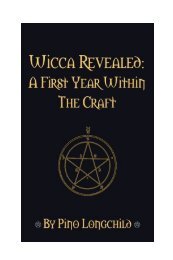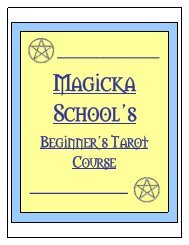A Magickal Herball Compleat.pdf - Magicka School
A Magickal Herball Compleat.pdf - Magicka School
A Magickal Herball Compleat.pdf - Magicka School
Create successful ePaper yourself
Turn your PDF publications into a flip-book with our unique Google optimized e-Paper software.
develop with the rise of Christian European metaphysics, which had its roots in<br />
the writings and proclamations of the Fathers of the Church, in the early centuries<br />
of the Common Era [7]. For them, symbolism could express the underlying unity<br />
in everything. Harmonies, similarities, and proportions were the glue that bound<br />
the Universe together, and these were evidenced by signatures found throughout<br />
nature [8]. It was the job of humankind to find these signs, learn of them, and use<br />
this knowledge to develop further as spiritual beings, in the hope that this would<br />
eventually bring an individual closer to God. This idea was developed more fully<br />
by Paracelsus, who, in the first half of the sixteenth century, created the Spagyric<br />
method of Pharmacy, whereby medicines were fashioned by separating, purifying<br />
and recombining the constituent parts of an herb or mineral. In the work Liber<br />
Paragranum he proposed that nature was in a 'raw and unfinished' state and that<br />
human beings had been given the job of evolving things to a higher level by God.<br />
Paracelsus was an Alchemist and such ideas were perfectly in keeping with the<br />
alchemical ideal of attaining spiritual perfection. For him, the 'raw' medicinal herb<br />
had to be separated into the basic alchemical constituents of Mercury, Sulphur and<br />
Salt, and all non-essential components removed. These three constituents were<br />
then recombined to create the medicine.<br />
However, it was not until the writings of the German visionary mystic Jacob<br />
Bohme (1575–1624) that the Doctrine of Signatures became a fully fledged<br />
philosophical idea. A master shoemaker by trade, Bohme had experienced a<br />
profound mystical vision of God and Humankind as a young man, whereby the<br />
relationship between the two was to be found in all things. Inspired by this in his<br />
forties, he wrote Signatura Rerum (1621), known in English as The Signature of all<br />
Things. This had a profound effect on European religious and philosophical<br />
thought: so the argument went, the Creator had left his mark on nature and,<br />
therefore, by a process of observation, one could find not only evidence of his<br />
genius, but also a sign of the correct use of all living things. It was not long before<br />
his ideas were applied to the medicinal qualities of plants.<br />
The herbalist immediately influenced by Paracelsus and Bohme’s ideas was<br />
William Coles (1626-1662), author of The Art of Simpling [9] and Adam in Eden, and<br />
a member of the College of Physician’s in London. Based on their theories he was<br />
able to make conjectures about herbs that were established through signatures<br />
found in both colour and form. Therefore, walnuts were the perfect palliative for<br />
ailments of the head because of their hard outer shells and brain like contents; the<br />
body of liverwort could be used for treating related diseases as it resembled a liver;<br />
toothwort would cure dental problems; spleenwort, splenetic disorders; and<br />
lungwort, whose patchy leaves resembled the lung, could aid respiratory problems<br />
[10]. On the other hand, based on the signature of colour, jaundice could be cured<br />
by plants with yellow flowers or roots such as goldenrod; bruising by a poultice<br />
made from the purple leaves of irises; and blood disorders alleviated by plants<br />
with red hues.<br />
The Doctrine of Signatures was to be complimented by theories of the astrological<br />
influence on herbs, made fashionable by Nicolas Culpeper. In a way, the linking of<br />
astrology and plants would have been the natural corollary of finding signs of the<br />
26




